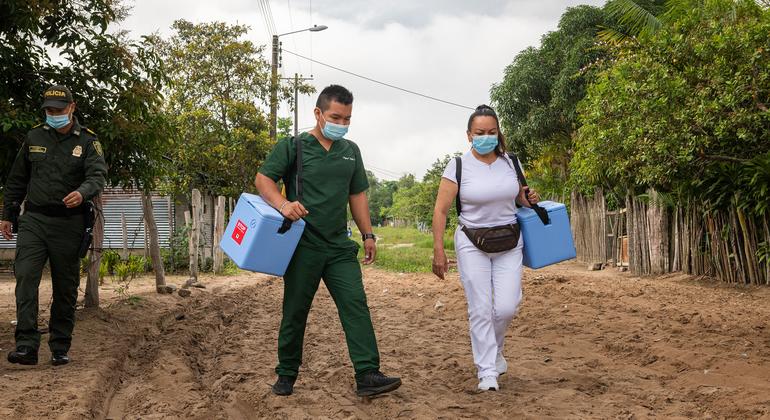Cases increased by 32 per cent over the previous week, while 18,000 new deaths occurred across the region, representing a 37 per cent relative increase during this period.
“As COVID cases are spreading more actively – and more quickly – than ever before, it’s clear that Omicron has become the predominant SARS COV2 strain in our region at the moment,” said Dr. Carissa Etienne, Director of the Pan American Health Organization (PAHO).
USA tops new infections
The United States continues to have the highest number of new infections, although cases declined by nearly one million last week. On the other hand, many states in southern Mexico have seen new infections triple.
In Central America, weekly fatalities were up 107 per cent, with Belize reporting the highest rates of new infections, while cases are accelerating in Honduras and Costa Rica.
In South America, COVID-19 cases are doubling nearly every two days in Paraguay and some of the Guianas region.
Infections are especially high in Bolivia, Peru and Ecuador. Nearly 800,000 cases were reported in Argentina, while neighbouring Brazil had 477,000 cases, a 193 per cent increase over the previous week.
Localized data critical
Caribbean countries Haiti and Martinique continue to report significant surges. Their vaccination coverages are among the lowest in the region.
Dr. Etienne highlighted the critical need for countries to continue to collect data, and particularly localized data, to better understand how the virus is progressing.
“Now more than ever, we need data about how this virus is affecting different ages, genders, groups, and geographies, so we can equip local municipalities and districts with the tools they need to manage risk and guide their populations during this time,” she said.
Vaccines for children
Addressing child vaccinations, Dr. Etienne stressed that governments should first ensure that groups at greatest risk of COVID-19, such as the elderly and health workers, remain a priority.
However, she reported that 12 countries and territories in the region have already reached the WHO target of 70 per cent vaccination coverage. These countries should consider the benefits of vaccinating children to further reduce virus spread.
“Many countries have already authorized and are safely administering COVID vaccines to adolescents,” said Dr. Etienne.
“And last week, the WHO’s expert group on immunization authorized Pfizer’s COVID vaccine for children between the ages of 5 and 12, offering a roadmap for countries that may be ready to roll out COVID vaccines for them.”
Measles, other diseases, resurface
However, COVID-19 is not the only health threat to youngsters in the region.
Dr. Etienne said millions have missed out on routine inoculations due to the pandemic, which is putting two decades of progress on immunization at risk.
As a result, some countries are now seeing outbreaks of diseases that had been under control for years. Brazil is currently battling a measles outbreak, while Haiti and the Dominican Republic face off against ongoing diphtheria transmission.
Safe at school
As the region continues to confront its worst educational crisis, with millions of students yet to return to school, Dr. Etienne underscored the importance of ensuring their safe return.
Students in countries in the Southern Hemisphere are now back in the classroom just as their northern counterparts enter the flu season.
“By promoting mask wearing and social distancing and ensuring adequate ventilation, countries can safely reopen schools. High vaccination rates among children are not a prerequisite for school reopening,” she said.



